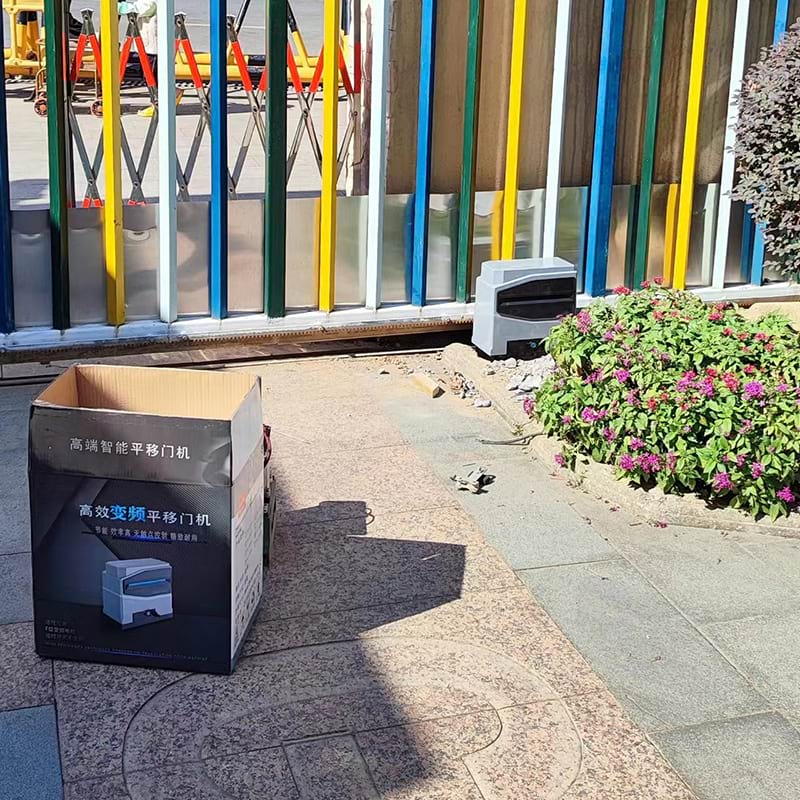Gate access control systems are essential for managing and securing entry points in residential, commercial, and industrial properties. These systems ensure that only authorized individuals gain access, thereby enhancing security. However, in emergency situations such as power outages or system failures, these systems must still function effectively to maintain security and safety. This article explores how gate access control systems handle such emergencies and the measures taken to ensure uninterrupted operation.

1. Backup Power Solutions
One of the primary concerns during a power outage is the loss of functionality of gate access control systems. To address this, several backup power solutions are typically implemented:
Uninterruptible Power Supply (UPS):
Function: A UPS provides immediate backup power from batteries when the main power supply fails.
Benefits: It ensures that the gate control system remains operational during short-term power outages, allowing time for other backup measures to take effect.
Backup Generators:
Function: Generators provide longer-term power solutions, kicking in when a power outage exceeds the capacity of a UPS.
Benefits: They ensure continuous operation of gate control systems, especially in areas prone to extended power outages.
Solar Power Systems:
Function: Solar panels can be used to provide power to gate control systems, either as a primary or backup power source.
Benefits: They offer a sustainable and reliable power solution, reducing dependency on the grid.
2. Manual Override Mechanisms
In case of system failures or prolonged power outages, manual override mechanisms are critical to ensure access and security:
Manual Release:
Function: A manual release mechanism allows gates to be operated manually.
Benefits: Ensures that gates can be opened or closed during a power outage or system failure, maintaining access control.
Emergency Access Codes or Keys:
Function: Pre-designated access codes or physical keys can be used to override electronic systems.
Benefits: Provides a secure method for authorized personnel to operate the gate manually.
3. Redundant Systems
To enhance reliability, gate access control systems often incorporate redundant components:
Redundant Controllers:
Function: Secondary controllers take over if the primary controller fails.
Benefits: Minimizes downtime and ensures continuous operation of the gate system.
Dual Communication Paths:
Function: Using multiple communication channels (e.g., wired and wireless) ensures that the system remains connected even if one path fails.
Benefits: Enhances the reliability of access control systems, especially during network failures.
4. Regular Maintenance and Testing
Preventative maintenance and regular testing are essential for ensuring the reliability of gate access control systems:
Scheduled Maintenance:
Function: Regular inspections and servicing of system components.
Benefits: Identifies potential issues before they lead to system failures, ensuring the system is always in optimal working condition.
Emergency Drills:
Function: Conducting regular drills to simulate power outages or system failures.
Benefits: Ensures that personnel are familiar with emergency procedures and that manual override systems function correctly.
5. Fail-Safe and Fail-Secure Modes
Gate access control systems can be configured to operate in fail-safe or fail-secure modes during emergencies:
Fail-Safe Mode:
Function: Gates automatically open when power is lost.
Benefits: Ensures that individuals are not trapped inside or outside the property during an emergency.
Fail-Secure Mode:
Function: Gates remain locked when power is lost.
Benefits: Maintains security by preventing unauthorized access, even during a power outage.
The choice between fail-safe and fail-secure modes depends on the specific security needs and safety considerations of the property.
6. Integrated Security Systems
Integration with other security systems enhances the resilience of gate access control systems:
Alarm Systems:
Function: Triggers alarms if there is an unauthorized attempt to access the gate during a power outage.
Benefits: Provides additional security and alerts personnel to potential security breaches.
Surveillance Cameras:
Function: Continues monitoring the area around the gate, even during power outages, using backup power solutions.
Benefits: Ensures continuous surveillance and documentation of any incidents.
Conclusion
Gate access control systems are designed to handle emergency situations such as power outages or system failures through a combination of backup power solutions, manual override mechanisms, redundant systems, regular maintenance, fail-safe and fail-secure modes, and integration with other security systems. These measures ensure that the systems remain operational, maintaining security and access control during emergencies. By understanding and implementing these strategies, property owners can ensure the reliability and effectiveness of their gate access control systems in all situations.